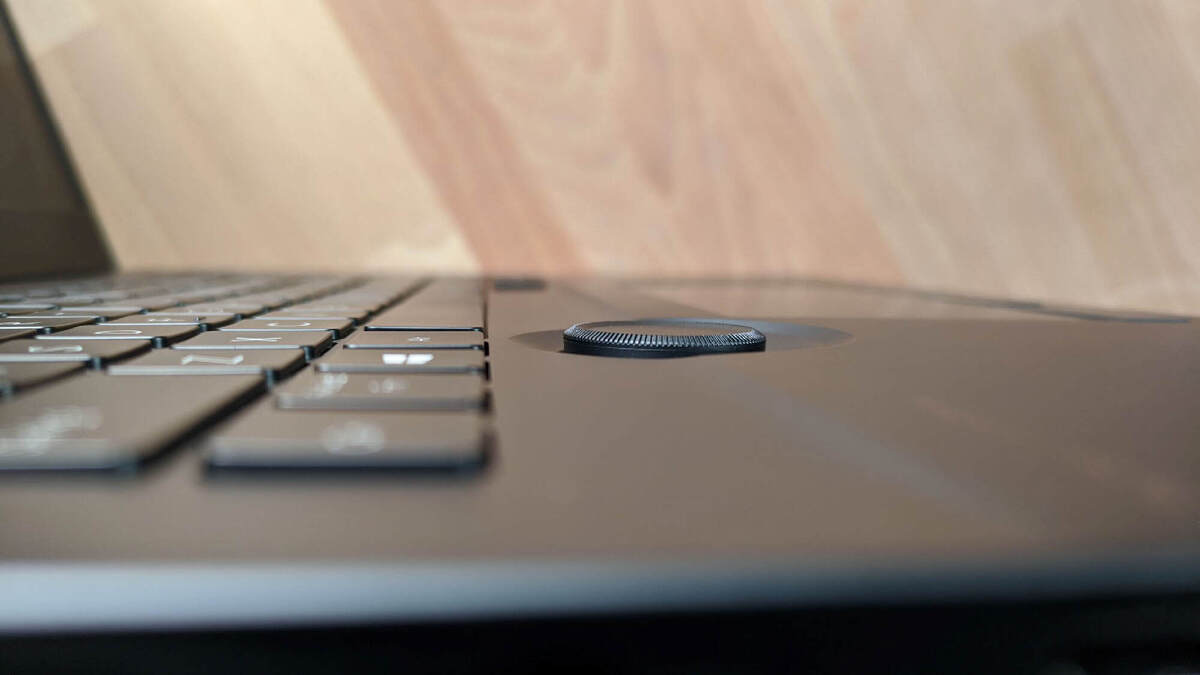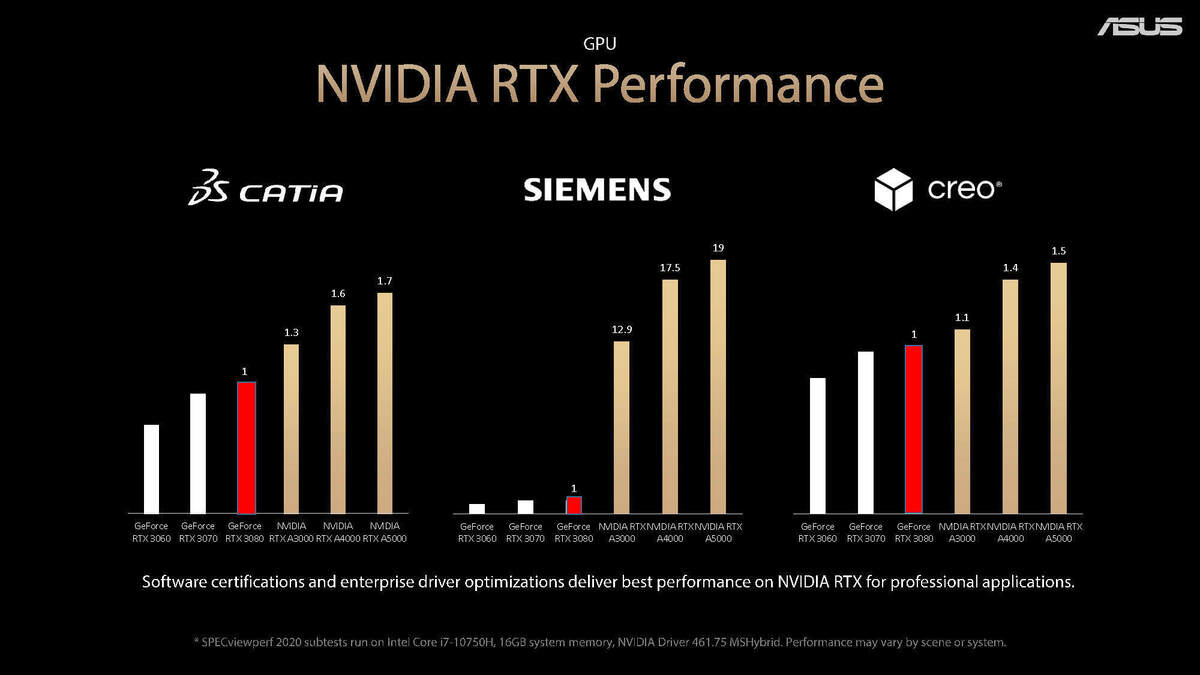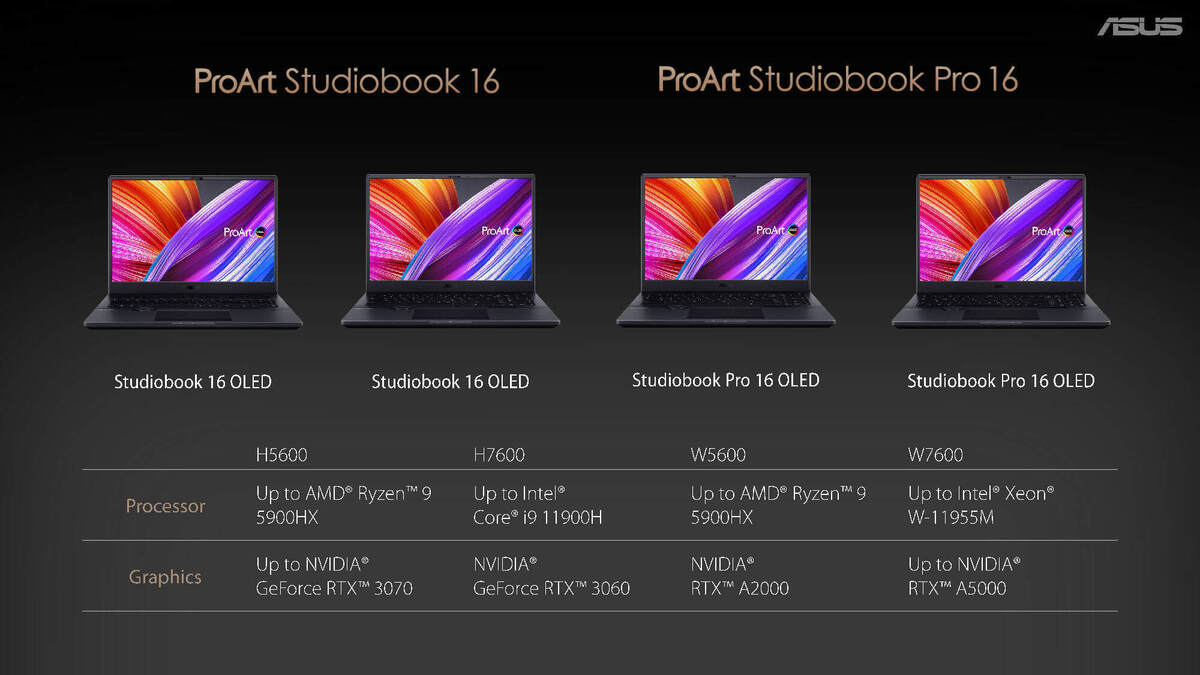The Asus ProArt Studiobook reinvents the wheel for content creators
- 03 September, 2021 02:00

Asus’s new ProArt Studiobook and Studiobook Pro series just reinvented the wheel. These laptops literally feature an embedded wheel embedded for content creators who need to quickly scrub through media or make quick adjustments.
You might not even look down at that wheel though, because it might be hard to rip your eyes away from the 16-inch, 4K+, 16:10 “third-generation” OLED screen Asus uses in the StudioBook series.
OLEDs have long suffered from burn-in concerns, but Asus says the latest Samsung technology helps mitigate that risk. The OLED features pixel-level wear levelling that monitors each subpixel’s use, and it will occasionally shift pixels slightly as well.
Asus said it also includes a screen saver beyond the one built into Windows. It will switch on automatically, dimming the screen after five minutes. Both features can be turned off but the Studiobook will spit out warning messages of the potential consequences.
 Asus
Asus
An OLED such as the ones in the new ProArt StudioBook’s offer superior color gamut at lower brightness levels than IPS panels.
The factory-calibrated panels offer 100 percent of the DCI-P3 color space, can hit a blazing 600 nits, and feature 0.2 ms gray-to-gray response. That’s about 100 times faster than typical screens, the company said.
Another attribute of the OLEDs that may be attractive to content creators is the color gamut, Asus said—even at lower brightness settings where traditional IPS panels tend to suffer. That can also translate to better battery life in some respects, since your eyes perceive the superior contrast of an OLED as being brighter than a comparable IPS panel. That means you can run the panel at a lower brightness setting, but your eyes will think its as bright as a typical IPS panel.
Dialing it in
So yes, the Studiobook laptops pack a pretty awesome panel, but the feature Asus hopes will appeal more to content creators is the Asus Dial. The Asus Dial is a physical jog dial and button in one that lets you scrub through the timeline in an Adobe Premiere video. It’s like a video-centric spin on Microsoft’s art-focused Studio Dial.
Asus and Adobe worked together to integrate support for the Asus Dial in Photoshop, Lightroom Classic, After Effects, and others apps in the suite.
 Asus
Asus
The Asus dial is a physical dial with support from Adobe applications. And don’t worry, it’s actually the same level as the keyboard so it won’t scratch the screen.
Asus said laptops with simple two-button trackpads aren’t enough for professionals who typically have an additional key to use with workstation apps, so it also added a third-button to the track pad.
None of this would mean anything without good hardware under the hood. On that tip, Asus doesn’t force you pick between AMD and Intel. Itt offers the ProArt Studiobook 16 H5600 OLED and ProArt Studiobook Pro 16 OLED W5600 with up to an AMD Ryzen 9 5900HX. If Intel’s 11th-gen Tiger Lake H fits your content creation needs better, you can get the ProArt Studiobook 16 H7600 OLED and ProArt Studiobook Pro 16 OLED W7600, with options ranging up to the 11th-gen Core i9-11900H.
What’s the difference between the Pro and non-Pro versions of the ProArt Studiobook? The GPU. The AMD-based H5600 comes with up to a GeForce RTX 3070 Laptop GPU and the Intel-based H7600 comes with up to a GeForce RTX 3060. While those are great GPUs for content creators, they aren’t really “Pro,” that’s where the Studiobook Pro stands out. The AMD-based Pro W5600 will see up to a Ryzen 9 5900HX paired with an Nvidia RTX A2000, while the Intel-based Pro W7600 will swap the Core i9 for a Xeon W-11955M paired with an RTX A5000.
Those workstation graphics cards each feature Nvidia’s GA104 GPUs, with the A5000 featuring a CUDA core count similar to a GeForce RTX 3080, and the A2000 somewhere between a GeForce RTX 3060 and GeForce RTX 3070.
Both A-series Pro GPUs also get certified drivers for use with professional workstation applications, which can significantly increase performance in some cases. Yes, that’s typically an artificial partition put up by Nvidia, but for someone doing it for a living, it’s worth the ticket. If you use Catia, Siemens or Creo, then you’ll want to reach for a Pro RTX GPU instead.
 Asus
Asus
Certain professional applications get a boost from certified driver support.
Keeping modern hardware cool is the key to high performance. Asus said its IceCool Pro thermal solution offers up to 110 watts of TDP while keeping the noise under 40 dBA, or up to 140 watts of cooling under 50 dBA.
Price and availability
The Asus ProArt Studiobook Pro 16 OLED W5600 and W7600 will be available in the next three months with a price starting at $2,500. The AMD-based ProArt StudioBook 16 OLED H5600 and the Intel-based ProArt StudioBook 16 OLED H7600 will also be available by the end of the year with a price starting at $2,000.
 Asus
Asus




